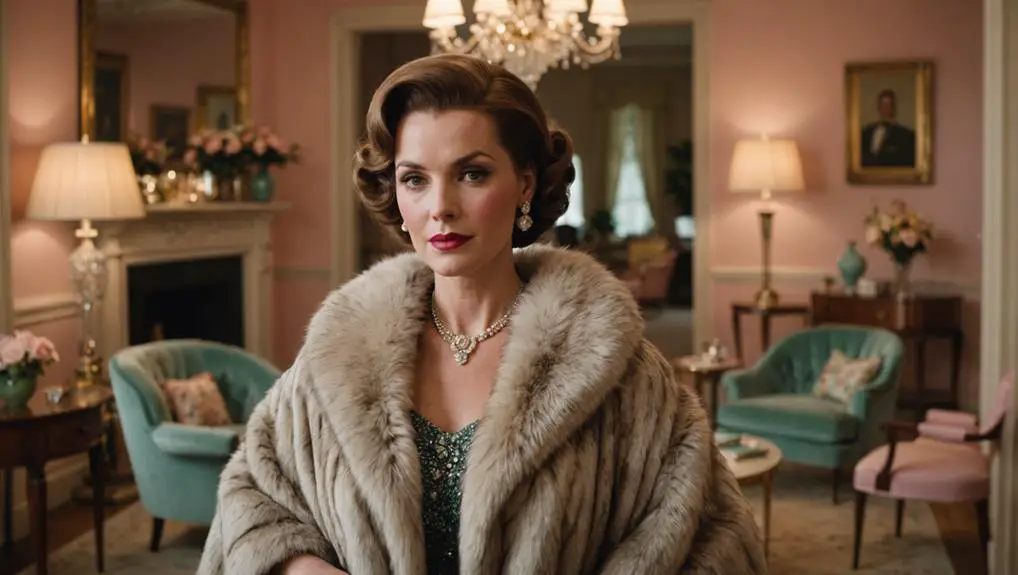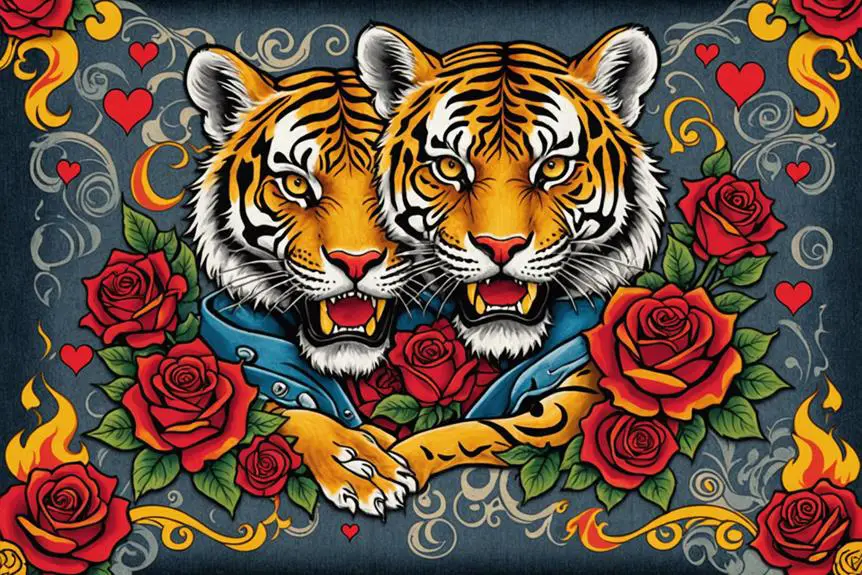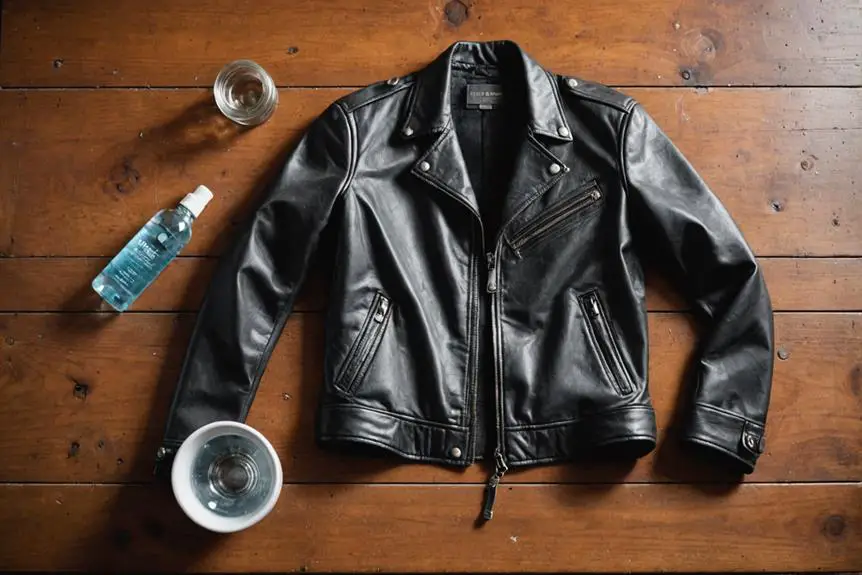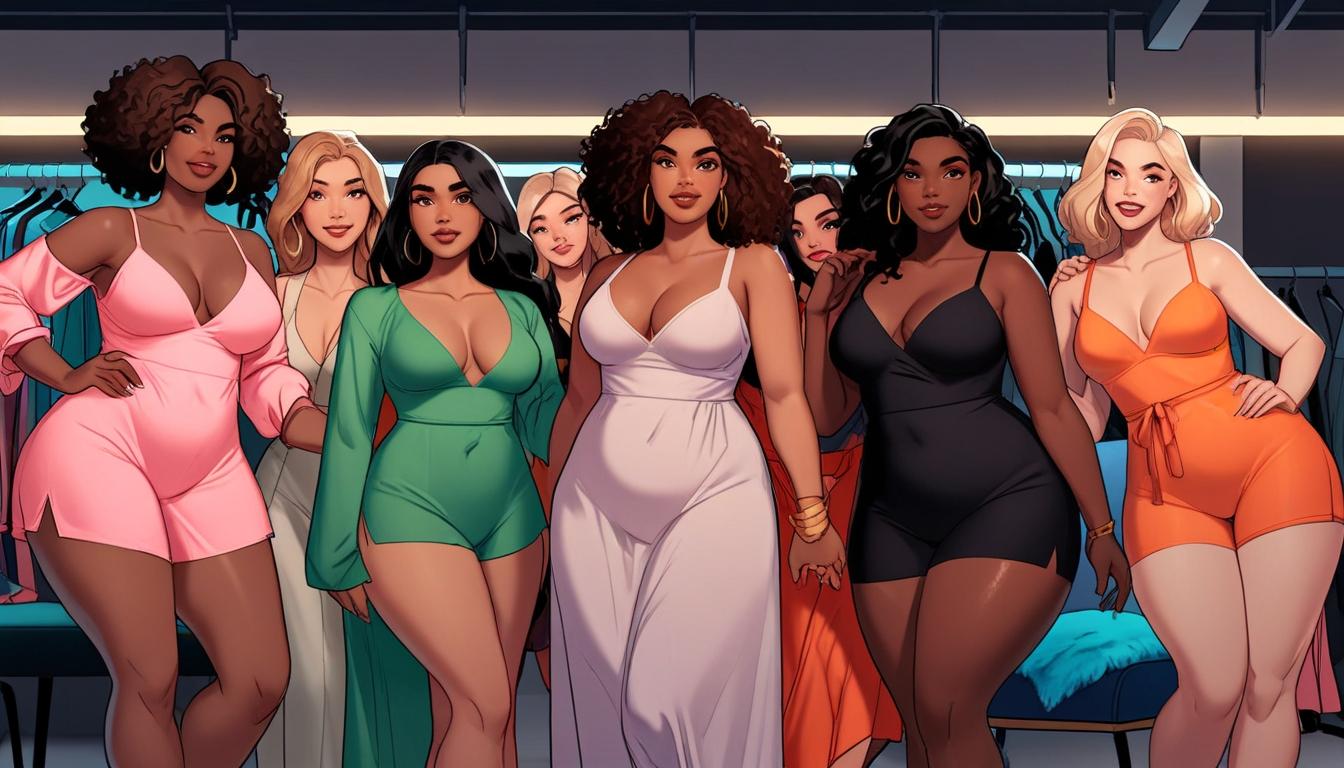In the 1950s, women's fur stoles were more than just fashionable accessories; they symbolized sophistication and grace. Crafted from luxurious materials like mink and fox, these stoles featured soft linings and became essential for high-society events. Designers like Christian Dior popularized their use, aligning with the decade's emphasis on the hourglass silhouette. While they served as practical warmth, they also reflected cultural glamour. However, as ethical concerns surrounding fur began to surface, the popularity of stoles started to wane. Explore the evolution of these striking accessories and discover what influenced their rise and fall.
Overview of Fur Stoles
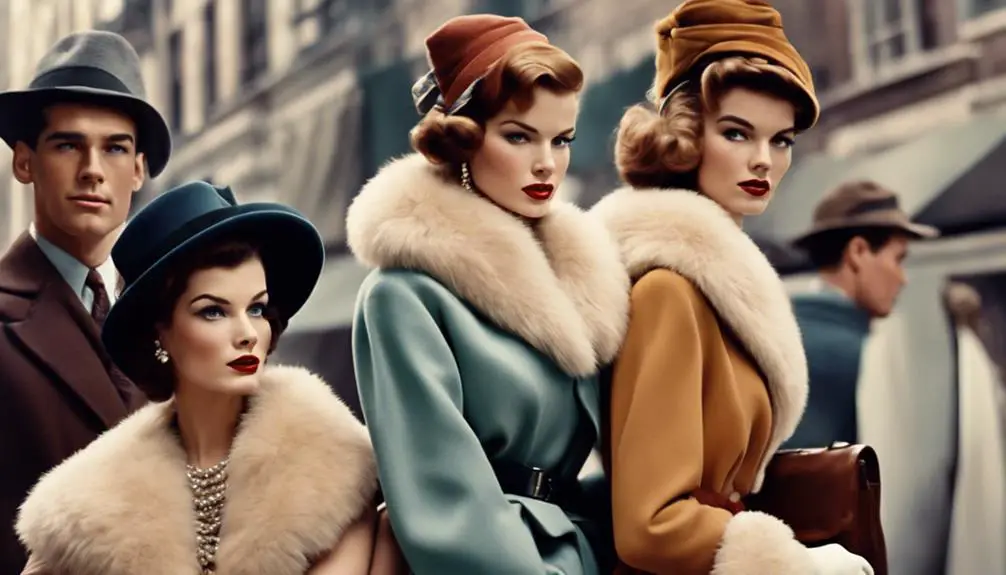
Fur stoles were more than just a fashion accessory in the 1950s; they were a statement of elegance and sophistication. As you explore the fashion landscape of this era, you'll find that fur stoles emerged as a must-have item for women seeking to elevate their evening wear and formal attire. Their luxurious construction typically featured a sumptuous exterior of fur, often made from sought-after materials like mink and fox, combined with a soft, satiny lining that offered both comfort and style.
In the context of 1950s fashion, these stoles reflected the period's emphasis on femininity and refinement. They added an air of grace to any outfit, allowing women to express their status and taste. As you investigate deeper, you'll notice how these accessories were not merely functional but also symbolic of a broader cultural narrative that celebrated glamour and sophistication. However, this love affair with fur stoles began to wane by the late 1960s due to rising ethical concerns about animal rights, marking a significant shift in fashion sensibilities. Understanding this evolution helps you appreciate the intricate relationship between fashion, culture, and ethics in the 20th century.
Fashion Trends in the 1950s
What defined women's fashion in the 1950s? The decade ushered in an iconic hourglass silhouette, emphasizing fitted bodices and voluminous skirts that celebrated femininity. Designers like Christian Dior and Coco Chanel were pivotal in shaping this style, often featuring luxurious fur stoles as essential accessories. These stoles, crafted from mink, fox, or rabbit fur, added an air of sophistication and glamour, appealing to women attending high-society events across the United States. Vintage clothing labels also played a significant role in identifying these exquisite pieces, with unique identifiers that reflected the era's elegance and craftsmanship.
As the rise of ready-to-wear fashion made these elegant pieces more accessible, a broader spectrum of women began to include fur stoles in their wardrobes. Picture yourself donning a chic ensemble, complete with a matching hat, perfectly enhancing your look. Whether in rich brown or classic black, the stole serves as a statement piece, exuding both style and status.
Yet, as the decade progressed, whispers of ethical concerns regarding fur began to emerge, hinting at a future where such luxury would face scrutiny. The 1950s, consequently, stands as a pivotal moment in fashion history, where glamour coexisted with the seeds of change.
Caring for Vintage Stoles
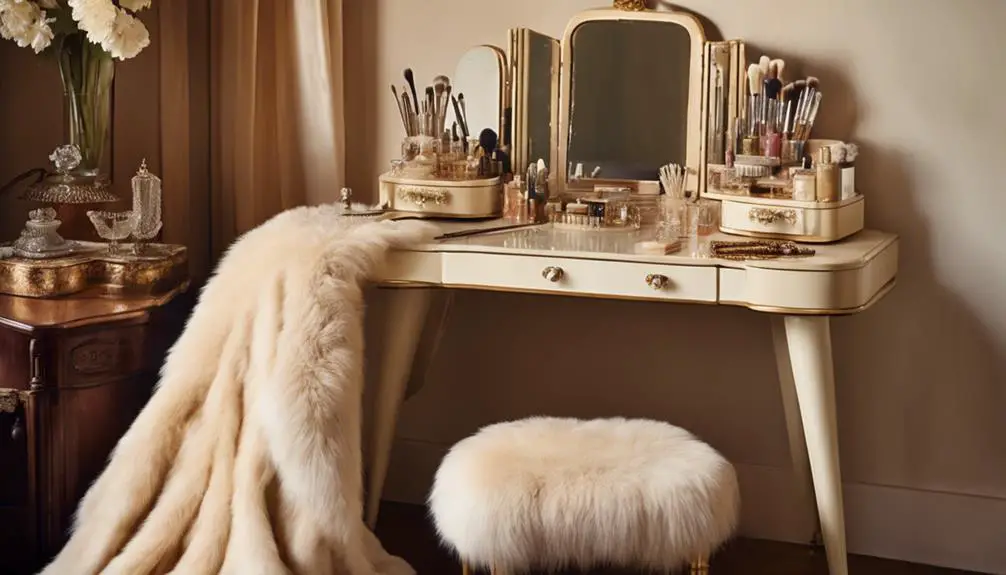
When it comes to caring for vintage stoles, proper maintenance is crucial to preserving their beauty and longevity. These timeless pieces require specific attention to guarantee they remain in excellent condition, especially considering the historical significance of vintage clothing labels and their role in determining value. Here are three critical steps to follow:
- Storage: Keep your vintage stole in a cool, dry place away from direct sunlight. This prevents fading and protects both the fur and lining from damage.
- Cleaning: Regularly brush the fur with a soft-bristle brush to maintain its appearance and prevent matting. For light surface dirt, gently use a damp cloth. However, for deeper cleaning, seek a professional furrier who understands the unique needs of vintage materials, including label identification for verifying authenticity.
- Handling: Always handle your stole with clean hands. Avoid exposing it to moisture, as water can cause irreversible damage and loss of shape. Additionally, steer clear of wearing it in harsh weather conditions to extend its lifespan.
Identifying Quality and Authenticity
To successfully identify quality and authenticity in vintage fur stoles, you'll want to pay close attention to several key elements that reflect craftsmanship from the 1950s. Start by examining the exterior fur; it should be well-constructed, with a shaping layer to help maintain its form. A smooth, satiny lining indicates higher craftsmanship typical of that era.
Next, assess the texture of the fur. Genuine fur feels soft and luxurious, while faux fur tends to appear shiny and less natural. If you're unsure about authenticity, perform a burn test: real fur burns cleanly and leaves ash, whereas faux fur melts and emits a synthetic odor.
Don't overlook the importance of vintage furrier labels inside the stole—these can establish provenance and greatly enhance its value. Finally, consider the overall condition of the piece; look for signs of excessive wear or damage. Well-preserved stoles without issues will fetch higher prices, making them a worthwhile investment. By focusing on these aspects, you can confidently navigate the world of vintage fur stoles and guarantee you're acquiring a quality, authentic piece from the 1950s.
The Future of Fur Stoles
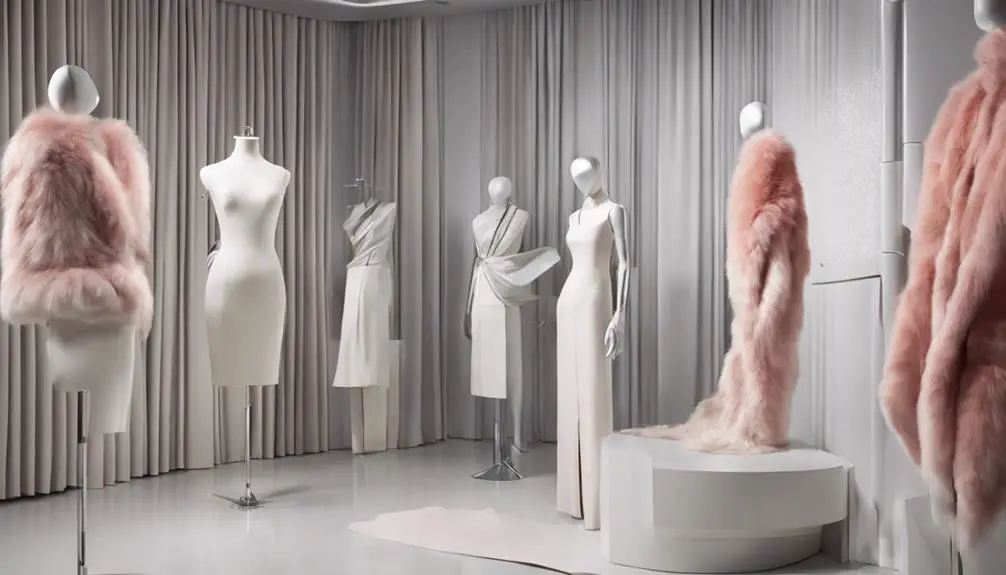
The evolving landscape of fashion is poised to reshape the future of fur stoles, as sustainability takes center stage in consumer preferences. You'll notice a shift towards more ethical choices, with an increasing demand for vintage options that tell a story. Here are three key trends influencing this transformation:
- Sustainable Fashion: You'll find that many consumers are now prioritizing brands that emphasize ethical sourcing and production, leading to a resurgence in vintage fur stoles.
- Advanced Faux Fur Technology: Innovations in faux fur have created alternatives that closely mimic the look and feel of real fur, making them attractive options for the eco-conscious shopper.
- Resale Market Growth: Platforms like eBay and Etsy are fueling a thriving market for pre-owned fur stoles, especially as younger generations seek unique and culturally significant fashion pieces.
As these trends coalesce, the future of fur stoles appears promising. Vintage items not only offer a unique aesthetic but also resonate with the growing awareness of fashion history. With evolving consumer preferences, expect a blend of ethical considerations and a celebration of past styles to dominate the market.
Frequently Asked Questions
What Years Were Fur Stoles Popular?
Fur stoles enjoyed immense popularity from the mid-1860s through the late 1960s. During this period, they became a staple accessory in women's fashion, symbolizing elegance and social status at formal events and gatherings.
Are Fur Stoles Worth Anything?
Yes, fur stoles can be worth significant amounts depending on factors like condition, quality, and rarity. Selling through consignment shops or online platforms often yields better prices, especially for unique or high-end pieces.
What to Do With Mink Stoles?
You can wear mink stoles as fashionable statement pieces, repurposing them in modern outfits. Alternatively, store them carefully for longevity or research their value before selling or donating to maximize their appeal and worth.
How to Wear a Fox Fur Stole?
To wear a fox fur stole, drape it elegantly over your shoulders for formal events or twist it around your neck for a cozy look. Pair it with fitted dresses or tailored coats for a striking silhouette.
